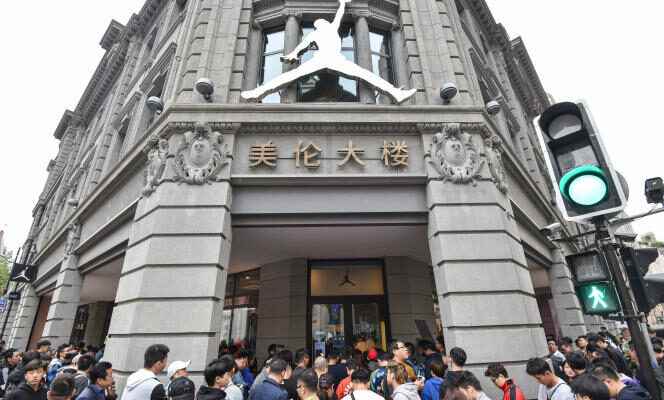If we tear ourselves away from basic necessities (toilet paper, sunflower oil, flour) as soon as the shadow of lack begins to hover over the shelves, what about superfluous consumer goods? To generate a maximum of purchases even if it means creating scenes of violence, it is also possible to organize artificial shortages which consist in marketing articles exclusively and in very small quantities, with little advertising.
Born in the 1980s in Japan, this marketing tactic, called “drop culture”, became popular with the fashion for sneakers in the United States, particularly when Nike launched the Air Jordan in 1985, which aroused the interest of collectors and dealers. A vintage model went for 16,120 euros last May at a Parisian auction.
This strategy of selling by scarcity, perpetuated in the 1990s by the American streetwear brand Supreme, is regularly based on occasional collaborations between two brands: an Yves Saint Laurent designer tuxedo in the La Redoute catalog in 1996; the sequined Karl Lagerfeld jacket produced in a few hundred copies for H&M in 2004; or an Inès de la Fressange corner at Uniqlo, created in 2014.
An ultra-trendy concept
A pretext for the democratization of luxury, drop culture now extends to a much larger market. In 2018, Intermarché created a riot with its promotion operation from January 25 to 27 on Nutella jars of 950 grams at 1.41 euros instead of 4.70 euros. Two years later, Lidl caused a sensation with its basketball in the colors of the brand, sold for 13 euros. A few weeks later, it is priced at 1,000 euros on eBay.
Last June, as we rushed for the last bottles of sunflower oil, drop culture celebrated its first festival during fashion week, at the ephemeral Grand Palais in Paris. But if scarcity is an ultra-trendy marketing concept, scarcity, producing more or less the same emotional alchemy, operates almost despite itself. This is how we find ourselves in the toilet paper department in the same emotional state as the buyers of the Crocs Balenciaga at 680 euros or the holidaymakers who are launched every morning in a race for the deckchairs to put their towels on the front row of the swimming pool.
